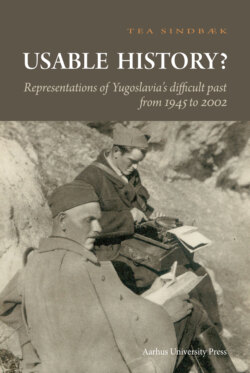Читать книгу Usable History? - Tia Sindbaek - Страница 13
На сайте Литреса книга снята с продажи.
Disintegration and war regimes
ОглавлениеThe Second World War entered Yugoslavia on the 6th April 1941, when Nazi- Germany bombed Belgrade and several Yugoslav airports. Germany was joined by its Axis allies, Italy, Hungary and Bulgaria, and a poorly prepared Yugoslav army was unable to resist the forceful attack. The king and the government went into exile on the 14th and the 15th April, and on the 17th an armistice, in fact an unconditional Yugoslav surrender, was signed in Belgrade.2
Yugoslavia was disintegrated, and parts of it were given to the pro-axis states surrounding Yugoslavia. Bulgaria annexed most of Macedonia, and bits of southern Serbia and Kosovo, while Hungary obtained Bačka north of the Danube and the northern regions of Prekomurje and Međumurje. Germany and Italy each seized a part of Slovenia, and the Italian controlled Albania seized north-western parts of Macedonia, most of Kosovo and some neighbouring districts in Serbia. Italy also annexed most of Dalmatia and occupied Montenegro. The rest of Croatia was united with Bosnia and Srem in the so-called ‘Independent State of Croatia’, (Nezavisna Država Hrvatska, known by the acronym NDH). The NDH was divided along the so-called demarcation line, which ran from the North-West, south of Zagreb, Banja Luka and Sarajevo, and ended north of Foča in the South East, leaving the Northern zone with the largest natural resources under German control, and the Southern zone connected with Dalmatia and Montenegro under Italy.
Serbia was occupied by Germany and a quisling government was set up, which was headed by the pro-German general Milan Nedić from late August 1941. Nedić, however possessed very little real power. In all important matters Serbia was ruled by the German administration, which murdered most of the country’s Jewish population and exploited resources of food, labour and raw material. Acts of resistance were harshly punished. As widespread insurrection broke out in Serbia in the summer of 1941, the German High Command reacted in September by issuing a directive according to which 100 hostages were to be shot in retribution for every German soldier killed. In 1943, the number of hostages to be shot was reduced to 50, and later the procedure was gradually abolished.
